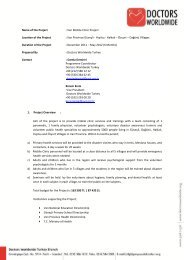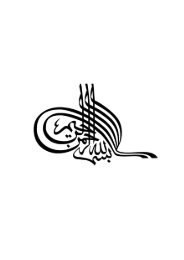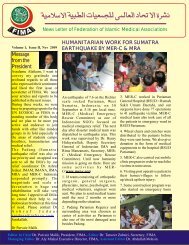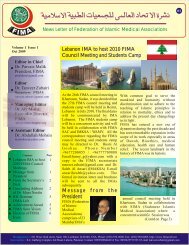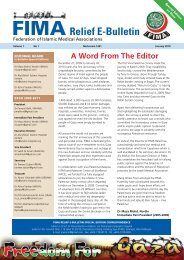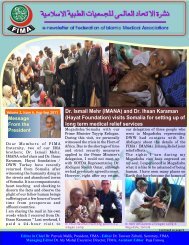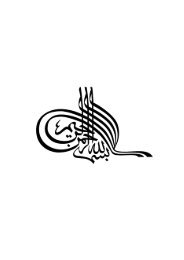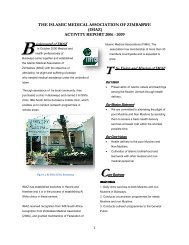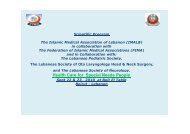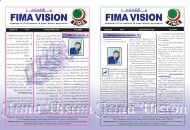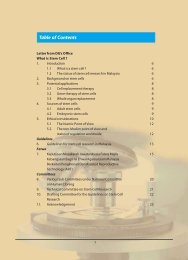FIMA Year Book 2009 - Federation of Islamic Medical Associations
FIMA Year Book 2009 - Federation of Islamic Medical Associations
FIMA Year Book 2009 - Federation of Islamic Medical Associations
Create successful ePaper yourself
Turn your PDF publications into a flip-book with our unique Google optimized e-Paper software.
Muslim Contributionsin various places and observed the areawhere the meat was least decomposed.Al-Razi was the first to use animalgut for sutures. He started using silksutures and alcohol for hemostatis.Al-Razi introduced mercurycompounds as purgatives (aftertesting them on monkeys); mercurialand lead ointments. His interest inurology focused on problems involvingurination, venereal disease, renalabscess, and renal and bladder calculi.He described hay-fever or allergicrhinitis.Some describe al-Razi, asthe greatest physician <strong>of</strong> the <strong>Islamic</strong>world. He wrote Kitab Al-Mansuri(Liber Almartsoris in Latin), a 10volume treatise on various disciplines,including Greek medicine (5) . His textscontinued to be reprinted well into the19th century.Ibn Sina ( Avicenna) in his masterpieceal-Qanun fi al- tibb (The Canon <strong>of</strong>Medicine) containing over a millionwords described complete studies <strong>of</strong>physiology, pathology and hygiene.He specifically discoursed uponbreast cancer, poisons, diseases <strong>of</strong>the skin, rabies, insomnia, childbirthand the use <strong>of</strong> obstetrical forceps,meningitis, amnesia, stomach ulcers,and tuberculosis as a contagiousdisease, facial tics, phlebotomy, tumors,kidney diseases and geriatric care. Herecognized ‘physiological psychology’in treating illnesses involving emotions.From the clinical perspective, Ibn Sinadeveloped a system for associatingchanges in the pulse rate with innerfeelings which has been viewed asanticipating the word associationtest <strong>of</strong> Jung. Ibn Sina suggested thecommunicable nature <strong>of</strong> tuberculosis.His recommendation <strong>of</strong> wine as thebest dressing for wounds was verypopular in medieval practice. He wasthe first to use alcohol as an antiseptic.Ibn Sina also originated the idea <strong>of</strong> theuse <strong>of</strong> oral anesthetics. He recognizedopium as the most powerful mukhadir( intoxicant drug). Less powerfulanesthetics known were mandragora,poppy, hemlock, hyoscyamus, deadlynightshade (belladonna), lettuce seed,and snow or ice cold water.Ibn Sina’s description <strong>of</strong> the surgicaltreatment <strong>of</strong> cancer holds true eventoday after 1,000 years. He said theexcision must be wide and bold; allveins running to the tumor must beincluded in the amputation. If this isnot sufficient, then the area affectedshould be cauterized.Ibn Sina was known in the West as “theprince <strong>of</strong> physicians.” His synthesis <strong>of</strong><strong>Islamic</strong> medicine, al-Qanun fi’l tibb , wasthe most authoritative book on medicalmatters in Europe for several centuries.Although Ibn Sina made advances inpharmacology and in clinical practice,his greatest contribution was probablyin the philosophy <strong>of</strong> medicine. Hecreated a system <strong>of</strong> medicine that todaywe would call holistic and in whichphysical and psychological factors,drugs, and diet were combined intreating patients (6) .Abu al-Qasim Khalaf bin Abbas al-<strong>FIMA</strong> <strong>Year</strong><strong>Book</strong> <strong>2009</strong>104




